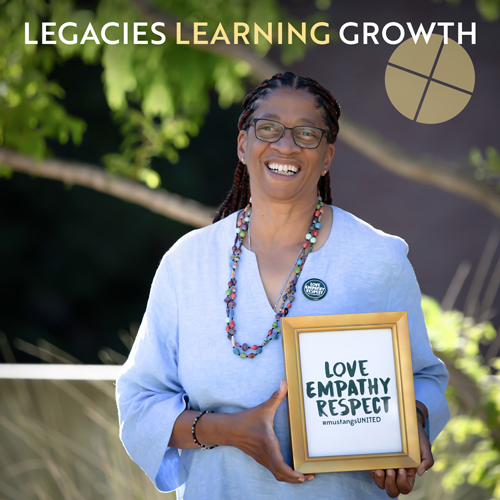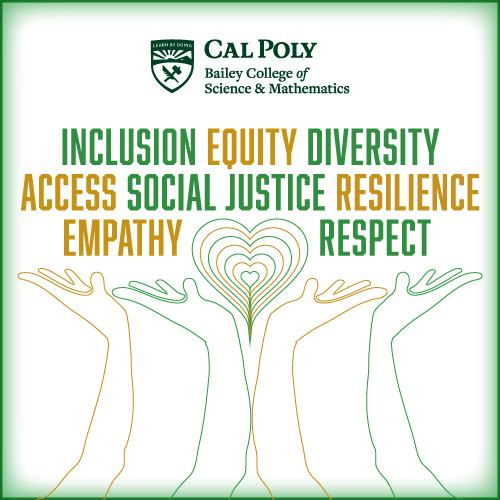Physics with Phones
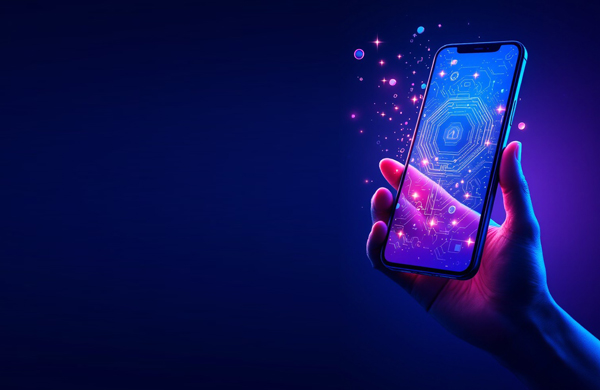 AI-generated image by Stockcake
AI-generated image by Stockcake
Bailey College students and faculty are innovating science education from the palm of the hand.
october 2025
by nick wilson
Ever wonder about the jittery effects of an energy drink? Or the distance you cover with your natural gait?
Instead of reflexively opening social media and entertainment-based apps, future generations of students will divert their cell phone attention to investigate friction, collisions, torque, acceleration and more.
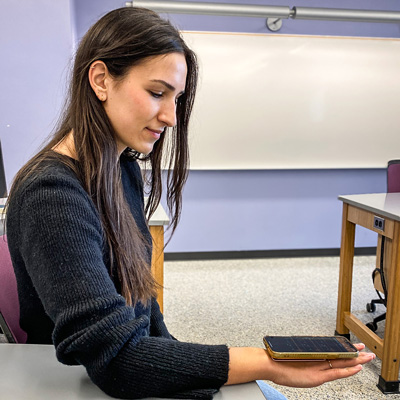
Biological sciences pre-medical student Adia Pinski conducts
an experiment on hand tremors. Photo by Jennifer KIay
Using smartphones and innovative physics curriculum designed by a Lawrence Livermore National Laboratory (LLNL) senior scientist, Cal Poly students are collecting and analyzing data related to motion, force, energy and other dynamical quantities of physics in exciting new ways.
Merging technology, biology and physics, Cal Poly Physics Department Chair Jennifer Klay collaborated in fall 2024 with LLNL’s Dave Rakestraw to tailor new Physics with Phones curriculum for Physics 125, an introductory lab course required for pre-health and pre-veterinarian students.
Rakestraw’s goal is to expand the program far and wide at various education levels, especially in disadvantaged areas where K-12 students lack access to equipment or don’t tend to see themselves as physicists. Using phones in the curriculum opens a gateway to science, and Cal Poly’s modeling could have a broad impact.
Physics 125 now uses the new curriculum to conduct experiments including measuring changes in hand tremors before and after students voluntarily consumed energy drinks. Students also assess walking mechanics based on foot motions and angles, techniques that can be applied in healthcare and veterinary science.
“Researchers spend hundreds of thousands of dollars for equipment in very controlled lab settings,” Klay said. “Physics using phones can achieve the same results, even better calculations in some cases, and provide the opportunity to innovate both inside and outside the classroom.”
In August, Klay presented on the course experience to physics educators from around the world at the American Association of Physics Teachers’ annual conference in Washington, D.C., during an Aug. 4 session titled “Innovations for Introductory Physics.”
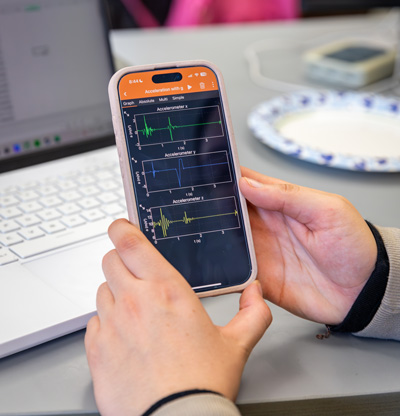
A “Physics with Phones” activity shows collected data.
Photo by Alexis Kovacevic
The benefits of Physics with Phones lesson plans and related artificial intelligence applications include saving money, providing hands-on learning opportunities and reaching more K-12 and college students through engaging activities.
“This experience not only deepened my understanding of physics concepts but also highlighted how mobile technology is transforming the way we conduct experiments, making science more interactive and accessible,” said Adia Pinski, a biological sciences major and pre-medical student who graduated in June.
Common iPhones, Androids and tablets are built with sensors to support applications for navigation, gaming, photography, voice recognition and music. These sensors include accelerometers, gyroscopes, pressure transducers, microphones, light detectors, speakers and GPS sensors that can be applied in physics experiments. Lab activities are designed so that each student is responsible for individual measurements with their own smartphone or a class loaner.
Free apps that are available to anyone, such as the physics-focused “phyphox,” allow access to sensor data that can be graphed in real-time and exported for further analysis in common spreadsheet formats such as Excel or CSV files.
“I think we severely underestimate the amount of technology and physics that our phones use,” said Zane Sieger, a biological sciences major and pre-medical student who graduated in March. “I believe that other Cal Poly students will enjoy coming into lab each week and integrating a device so familiar to us, as I did.”
Additionally, Klay and Rakestraw are collaborating to apply artificial intelligence (ChatGPT) to analyze complex sets of data, recorded by phones.
“We were able to use AI to write a natural language prompt that would otherwise be too complex for an introductory physics lab,” Klay said. “The same algorithm is taught in advanced physics curriculum and in electrical engineering. We can use this technology to educate novice students without overwhelming them.”

From left: Cal Poly students Alex Charoenkul, Evan Yabu and
Graham Griswold collaborate on a "Physics with Phones" activity.
Photo by Alexis Kovacevic
Klay, Rakestraw and five students — including Sieger and Pinski — published an article in April in the American Association of Physics Teachers’ physics education journal about using AI to enhance the learning experience in an introductory lab, demonstrating how students can analyze real-world data through tools like ChatGPT.
As he continues to spread the word, both remotely and in person, Rakestraw hopes that K-12 and college campuses globally will adopt Physics with Phones and AI tools to advance science, technology, engineering and mathematics education.
“I’ve presented at teacher conferences, led student workshops, taught individual labs at Fresno State and Historically Black College and University campuses, but this class with Dr. Klay was the first time teaching a full course using this technology and designed lessons,” Rakestraw said. “There are 7 billion of these phones out there, and they are incredible devices to learn from.”
Cal Poly students commented in a survey after the fall lab about the benefits of Physics with Phones, with one student noting: “I like that I am able to understand more about emerging technology related to healthcare.”
Another stated: “I think the implementation of this in veterinary medicine could be amazing since the patients can’t talk or tell us when something feels off.”
Yet another student said: “Tremors run in my family! I was interested to see about my own. I was learning about gait in my animal science classes before this. Super fun to connect the two.”
Learn about and get involved with the Bailey College Innovation Initiative!



